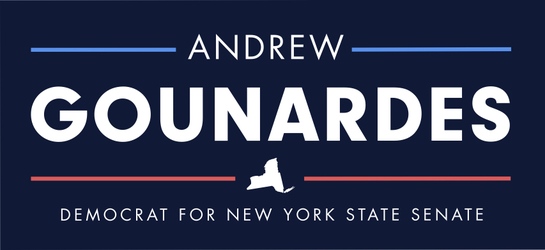|
Friend,
It's been ten years since Sandy devastated parts of New York, including many coastal communities across Brooklyn.
I still remember spending most of that first night at FDR High School, which was turned into an emergency shelter so people who were being flooded out of their homes could have a safe place to stay. But it was dark outside and we really had no way of knowing just how dire the circumstances were.
And then when the morning came, and we could see the devastation in the daylight for the first time, it was just so hard to process. Reflecting back on it ten years later, I still don't think I've seen devastation like that ever before. Nor do I ever want to. I can close my eyes and recall in vivid detail walking up and down the streets in Gerritsen Beach in the days after the storm, delivering food to people stuck in their homes and handing out emergency contact information for FEMA and other disaster response agencies.
Ten years ago today, we lost 53 of our neighbors in the storm, along with hundreds and thousands of homes and businesses. In some ways, we are still reeling from the devastation wrought by Sandy, as too many are still in the process of rebuilding. Yet in the darkness, the fear, and the pain of those days, New Yorkers did what they always do: jumped into action to help each other, whether by dropping off hot meals, sharing access to electricity, or providing crucial shelter. Even as the storm destroyed so much, it built community in a way that nothing else could: millions of people coming together to care for each other.
To this day, one of the proudest moments in my life was coming together with neighbors to form the Bay Ridge Cares Kitchen, preparing and delivering tens of thousands of hot meals to those who lost everything in Coney Island, Gerritsen Beach, Rockaway, Breezy Point, and Staten Island. Community carried us through.
As we look ahead to the future, we must also recognize that storms and hurricanes are likely to increase in intensity and in frequency due to the ever-worsening impacts of the climate crisis. But there are steps we can take to mitigate its worst impacts: passing the Climate and Community Investment Act, the Build Public Renewables Act; prioritizing coastal resiliency projects; and each of us voting to pass the Clean Water, Clean Air, and Green Jobs Environmental Bond Act on our ballots this Election Day.
As I reflect on the past ten years, I’m reminded of the popular Chinese proverb: “the best time to plant a tree was twenty years ago. The second best time is now.”
The best time for us to take bold climate action would certainly have been twenty (or more) years ago, before the impacts of Superstorm Sandy were so harshly felt.
But now, all we have left is the present – and the future, with its threats of more and more storms. The best time to act is now.
In solidarity, |
|
|
Andrew
|
|
|
|
|
|
Andrew for New York 725 70th Street, Apt C1 Brooklyn, New York 11228
If you believe you received this message in error or wish to no longer receive email from us, you can unsubscribe at any time by clicking here to unsubscribe. |

